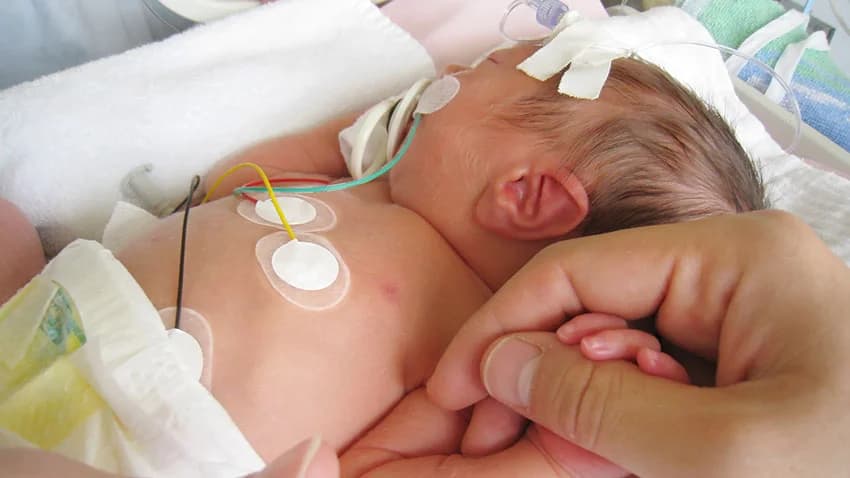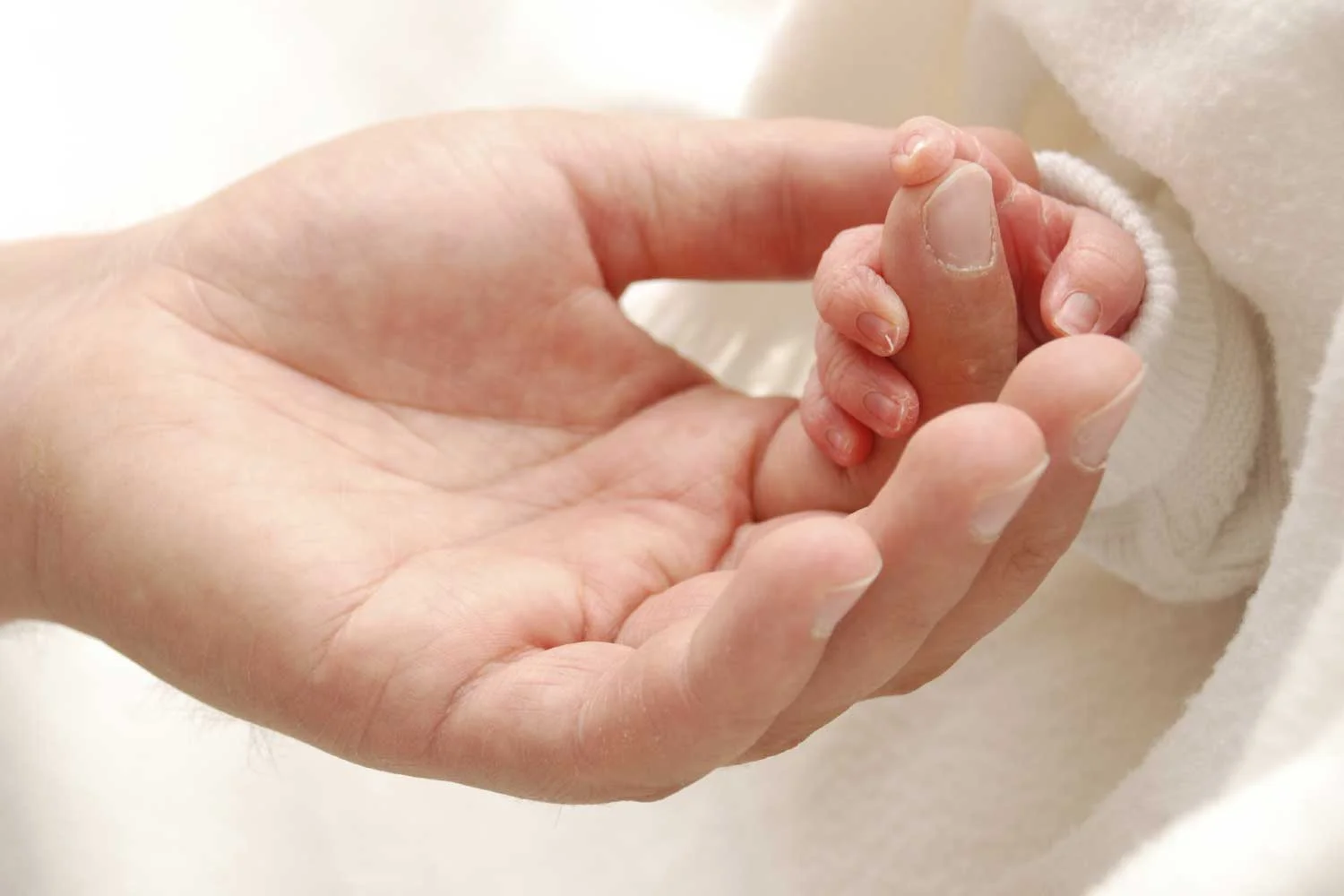A single ventricle is a congenital heart defect that occurs due to abnormal development of the fetal heart during the first eight weeks of pregnancy. Due to the improper development of the fetal heart, the left or right ventricle may be underdeveloped. There may be openings present in the atrial or ventricular walls allowing oxygen-poor (blue) blood and oxygen-rich (red) blood to mix. This causes cyanosis or blueness. Your child will need a series of necessary operations to re-route the blood so that enough oxygen is provided. Single ventricle defects occur in about 5 out of every 100,000 live births, which is very rare. Single ventricle defects include:
Hypoplastic left heart syndrome (HLHS): Occurs when the left ventricle, mitral valve, aortic valve, and aorta are all undersized.
Double outlet right ventricle: Occurs when both the aorta and the pulmonary artery come out of the right ventricle. This leaves the left ventricle underdeveloped.
Tricuspid atresia: A defect where the tricuspid valve fails to develop. This leads to an underdeveloped right ventricle.
Double inlet left ventricle: occurs when both of the upper chambers of the heart (atria) connect to the left ventricle. This results in an underdeveloped right ventricle.

Why is the single ventricle a concern?
This heart defect causes children to be cyanotic (blue) since a combination of oxygen-poor (blue) and oxygen-rich (red) blood leaves the heart and goes to the body. Many factors determine how much oxygen or how little oxygen will be in the bloodstream. In some children, there is not enough oxygen in the blood to meet the body's needs.
What Are the Signs & Symptoms of a Single Ventricle Defect?
Signs of this situation may start a few hours to a day after birth. Although a doctor usually finds the problem before the baby’s birth. A newborn with a single ventricle defect can have:
trouble breathing
trouble feeding
blue or grayish color of the skin and nails
lethargy (very little activity)
weak pulses in the arms and legs
few wet diapers

What Causes a Single Ventricle Defect?
A single ventricle defect usually occurs in the developing heart during the first 8 weeks of pregnancy. Some might be due to a combination of genes and things in the baby's and mother's environment during this early stage.
How Is a Single Ventricle Defect Diagnosed?
Your doctor will examine your fetus during pregnancy with an echocardiogram, which can find single ventricle defects. If not, it can be diagnosed shortly after the baby’s birth with an echocardiogram (using ultrasound or sound waves to build a series of pictures of the heart). However, if the baby’s single ventricle defect is not found before birth, they may become very ill.
How Is a Single Ventricle Defect Treated?
Single ventricle defects are treated by two or three surgeries. To learn more about these surgeries, click here…
The first surgery varies, depending on the diagnosis. But the second and third surgeries are usually the same no matter what kind of heart defect a child has. The goal of the surgeries is to rebuild the heart and make sure that it:
pumps blood out to the body
returns the blood to the lungs (without being pumped by the heart as it would be in a child with two normal ventricles)
returns the blood to the heart
Surgeries can include:
Norwood Procedure
Glenn Procedure
Fontan Procedure
The various types of single ventricle heart defects are very different, and treatment for each must be customized.

Life expectancy for single ventricle heart defects
About 40 years ago, children born with single ventricle heart defects wouldn’t survive past infancy. But nowadays due to advanced surgeries, medication, and intensive care, the majority survive. There are now thousands of people in their 20s and 30s with Fontan circulation. However, there is still no exact life expectancy for these patients, since as they get older, doctors recognize some have complications such as lung, liver, and gastrointestinal diseases.
Follow-up care for single ventricle heart defects
Through age 18
It’s important to have frequent appointments with your child’s cardiologist in infancy and early childhood to minimize risk factors associated with single ventricle heart defects. After customized diagnostic tests and surgeries, your child will have appointments with a pediatric cardiologist once a year or more frequently. It is also possible that your child will require additional surgical or catheter therapies or in rare cases heart transplantation. Your child will mostly be told to do any physical activity they can. Even though there are certain sports and activities to avoid, most children will stop activities if they begin to stress their bodies.
Into adulthood
Children born with single ventricle heart defects that are treated with Fontan circulation must continue to see a cardiologist as an adult. Women who have had a Fontan procedure may be able to have a successful pregnancy and delivery. However, the risk is high for both the mother and the baby. There is also a higher risk of obstetric complications, including miscarriage and preterm labor. Anyone with Fontan circulation should have a complete evaluation by an ACHD specialist and high-risk obstetrician before becoming pregnant and during the pregnancy.

Will You Need More Surgery?
Most single ventricle surgeries are performed in the first two to four years of life and don't require more surgery. In rare cases, a heart transplant may be considered. Your doctor will explain these possibilities because every single ventricle has unique features.
Conclusion
In conclusion, Single Ventricle is a rare congenital heart defect that affects one lower chamber of the heart. The affected ventricle may be smaller, underdeveloped, or missing a valve. This condition includes several subtypes, such as Hypoplastic Left Heart Syndrome (HLHS), Pulmonary Atresia/Intact Ventricular Septum, and Tricuspid Atresia. In neonates with single ventricle, the systemic and pulmonary blood flow mix with each other in the single functioning ventricle, leading to lower systemic oxygen saturations. Treatment usually requires open-heart surgery and is performed in several stages, including the Norwood procedure, Glenn procedure, and Fontan procedure. Despite the complexity of the condition and the treatment, with early diagnosis and appropriate care, many children with Single Ventricle can lead healthy lives.